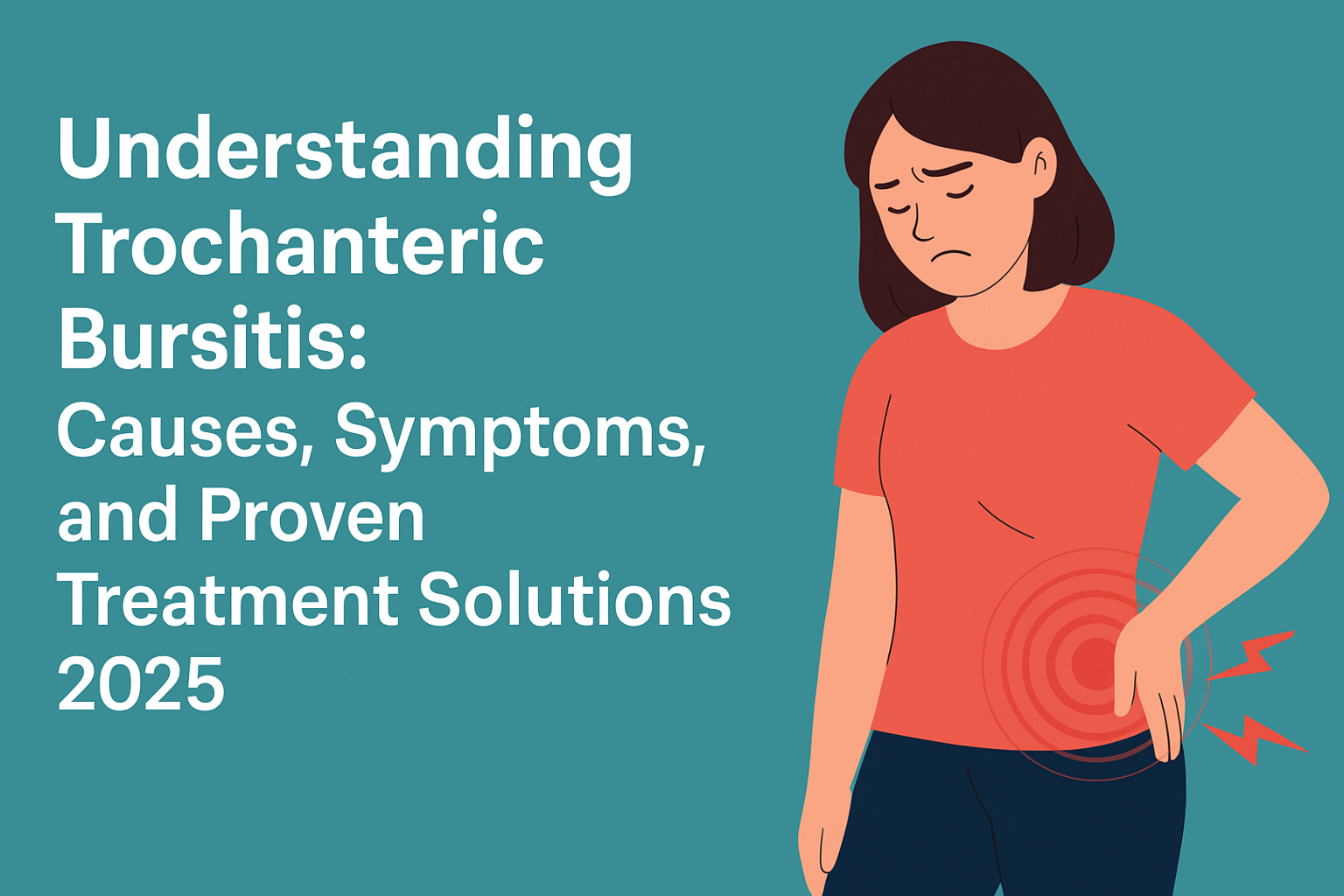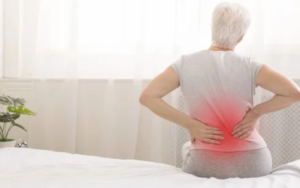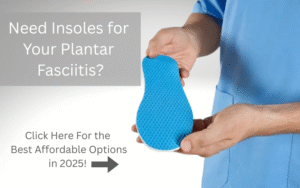Trochanteric bursitis is a common cause of pain on the outside of the hip. It can make walking, sleeping, and even sitting uncomfortable. But what exactly is it—and why does it hurt so much? In this guide, we’ll break down the causes, symptoms, and the best treatment options available in 2025. Whether you’re dealing with nagging hip pain or want to stop it from coming back, this post will give you the answers you need—plus a few surprises that might change how you treat it.
Table of Contents
🏁 What Is Trochanteric Bursitis?
Trochanteric bursitis is a painful condition that affects the outer part of your hip. It happens when the bursa—a small, fluid-filled sac—becomes swollen and irritated. The bursa helps reduce friction between bones, muscles, and tendons. When it gets inflamed, it can cause sharp or aching pain.
Where Is the Trochanteric Bursa?
The trochanteric bursa is located on the outside of your upper thigh bone (femur). This bony point is called the greater trochanter. It’s where many hip muscles and tendons attach. When you walk, sit, or lie on your side, this area can get a lot of pressure.
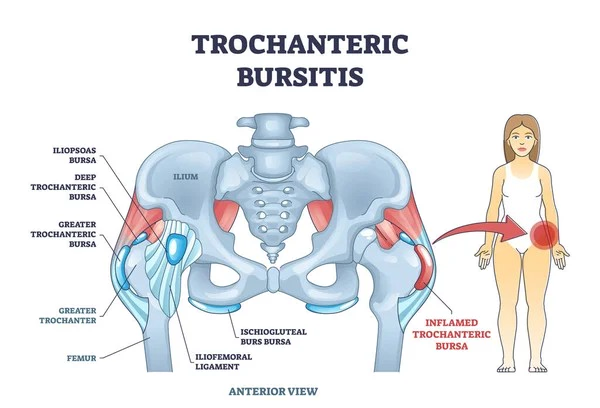
⚖️ Common Causes of Trochanteric Bursitis
Understanding what causes trochanteric bursitis is the first step toward healing and preventing it in the future. This condition usually develops over time, but sometimes it can happen suddenly after an injury. Below are the most common triggers.
Repetitive Motion or Overuse
Doing the same movement over and over—like walking long distances, climbing stairs, or running—can put too much stress on the hip bursa. Over time, this leads to irritation and inflammation.
Direct Trauma to the Hip
A fall or bump to the side of the hip can injure the bursa. Even a small impact can cause swelling, especially if the area is hit often (like bumping into furniture).
Weak Hip or Core Muscles
When hip and core muscles are weak, the body doesn’t move properly. This poor movement control can put more pressure on the bursa, increasing your risk of inflammation.
Poor Posture or Body Mechanics
Bad posture while walking, sitting, or standing can throw off your alignment. If one leg is slightly longer than the other (even by a small amount), it can lead to uneven pressure on the hip bursa.
Tight or Overactive Muscles
Tight iliotibial (IT) bands, glute muscles, or hip flexors can rub against the bursa during movement. This friction can inflame the area and cause pain.
💡 Tip: Foam rolling or stretching these muscles regularly may help.
Underlying Conditions
Some health problems make you more likely to get trochanteric bursitis. These include:
- Osteoarthritis
- Rheumatoid arthritis
- Scoliosis
- Thyroid disease
- Gout
These conditions can increase joint stress, trigger inflammation, or change the way you walk.
🟡 Signs and Symptoms to Watch For
Trochanteric bursitis often starts with mild discomfort but can become more painful over time. Knowing the warning signs can help you catch it early and start treatment faster.
Pain on the Outer Hip
The most common symptom is a deep, aching pain on the outside of your hip. It usually starts slowly and gets worse with activity or pressure.
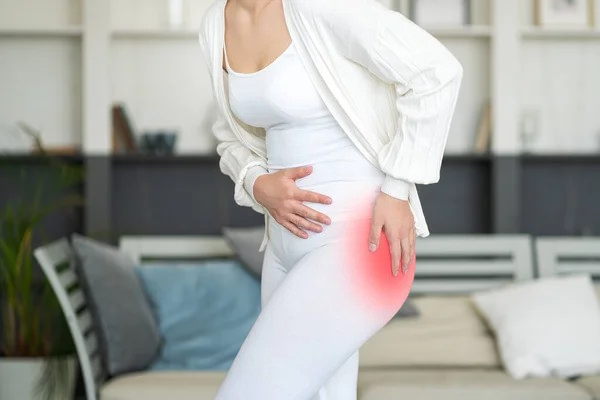
Pain with Movement
Walking, climbing stairs, getting out of a chair, or standing for long periods can all make the pain worse.
Swelling or Tenderness
The area around your greater trochanter may feel sore or slightly swollen when touched.
🧾 How Is Trochanteric Bursitis Diagnosed?
If you’re dealing with outer hip pain that won’t go away, getting the right diagnosis is the first step toward relief. Diagnosing trochanteric bursitis is usually straightforward, but your doctor will need to rule out other possible causes of hip pain.
1. Medical History
Your doctor will ask questions like:
- When did the pain start?
- Does it hurt more during certain activities?
- Have you had any falls or injuries?
- Does it affect your sleep?
They’ll also ask about your work, exercise habits, and any past surgeries.
2. Physical Exam
Next, your doctor will press on the side of your hip to check for tenderness. You may be asked to move your leg in different directions to see what triggers the pain.
If you feel sharp or aching pain when pressure is applied to the greater trochanter, it’s often a sign of trochanteric bursitis.
3. Imaging Tests (If Needed)
If the cause of pain isn’t clear, your doctor may order one or more of these tests:
- X-rays – To rule out arthritis or bone problems
- Ultrasound – To check for swelling in the bursa
- MRI – To see soft tissues, tendons, or possible tears
These tests help confirm the diagnosis and make sure you don’t have another condition like a hip labral tear or sciatica.
4. Differential Diagnosis
Some conditions mimic trochanteric bursitis, including:
- Hip osteoarthritis
- Lumbar spine (lower back) issues
- Gluteal tendon tears
- Sciatica
A proper diagnosis helps your treatment stay on track and avoid unnecessary delays.
💊 Effective Treatment Options in 2025
Good news: trochanteric bursitis is very treatable—especially with the modern options available in 2025. Most people get better with simple, non-surgical treatments. Here’s what works best today.
1. Rest and Activity Modification
Avoid the activities that make your pain worse—like long walks, running, or sleeping on your painful side. Short-term rest gives the bursa time to calm down.
2. Ice Therapy
Applying ice for 15–20 minutes a few times a day can reduce pain and swelling. Use a cloth to protect your skin.
3. Physical Therapy (PT)
In 2025, PT remains one of the most effective ways to treat trochanteric bursitis. A therapist will help you:
- Stretch tight muscles (like the IT band or hip flexors)
- Strengthen weak glutes and core muscles
- Improve posture and movement patterns
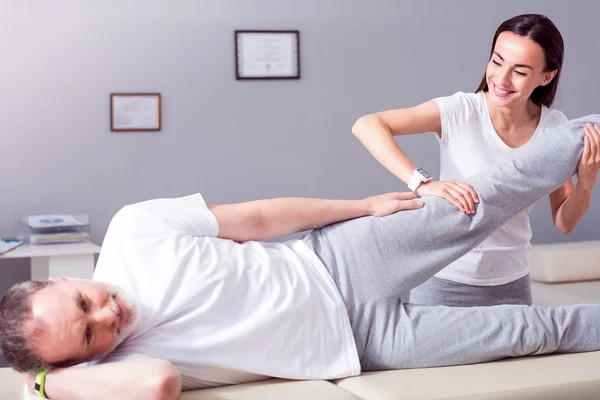
4. Topical and Oral Anti-Inflammatories
Over-the-counter pain relievers like ibuprofen or naproxen help with inflammation. New in 2025: fast-absorbing topical creams designed to target deep hip pain without upsetting your stomach.
5. Therapeutic Injections
If pain doesn’t improve, your doctor might recommend:
- Corticosteroid injections – Quickly reduce swelling in the bursa
- Platelet-Rich Plasma (PRP) – Uses your own blood to promote healing
Both options offer relief, especially for stubborn or chronic cases.
6. Assistive Devices
Using a cane for short periods can reduce pressure on your hip while walking. Shoe inserts may also help correct uneven leg length or posture.
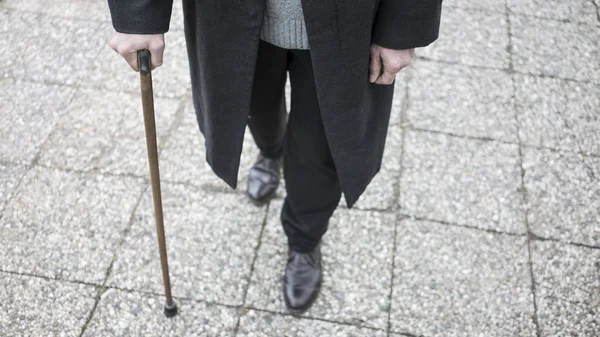
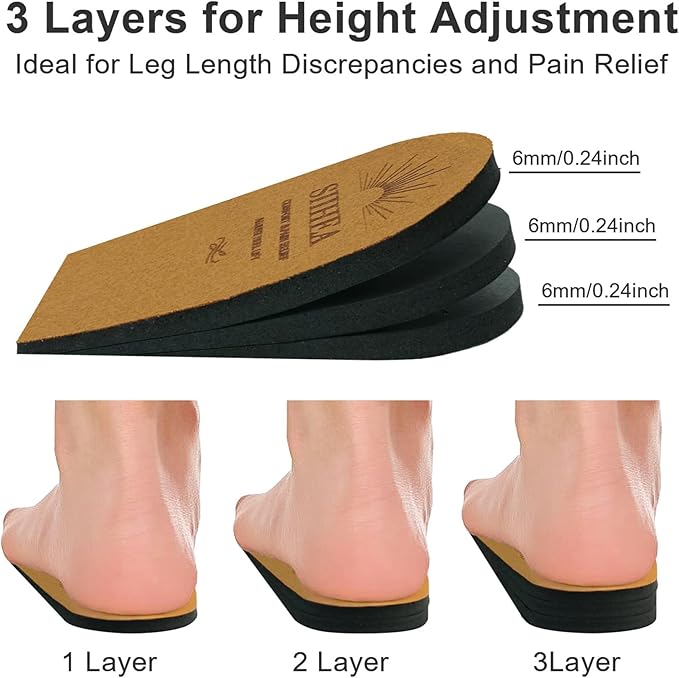
7. Advanced Technologies in 2025
Some new tools being used for trochanteric bursitis this year include:
- Shockwave therapy – Stimulates healing in painful tissue
- Wearable rehab devices – Track your hip movement and guide exercises in real time
- Cold compression machines – Combine cold therapy with gentle compression for better recovery
8. Surgery (Rare)
Surgery is only used if all other treatments fail. It may involve removing the inflamed bursa or repairing nearby tendons.
🏋️ Top Exercises for Trochanteric Bursitis Relief
Exercise is one of the best ways to heal from trochanteric bursitis. The right moves can reduce pain, improve hip strength, and stop flare-ups from coming back.
Here are the top physical therapist-approved exercises to help you feel better—fast.
1. Standing IT Band Stretch
This stretch targets the tight band of tissue that often pulls on the hip bursa.
How to do it:
- Stand tall next to a wall for balance.
- Cross your painful leg behind the other leg.
- Lean your upper body slightly away from the sore side.
- Hold for 30 seconds. Repeat 2–3 times.
2. Clamshells
Clamshells strengthen the Gluteus Medius, a key hip stabilizer.
How to do it:
- Lie on your side with knees bent and feet together.
- Keeping feet touching, lift your top knee like opening a clamshell.
- Slowly lower. Do 2–3 sets of 10–15 reps.
3. Bridges
Bridges build strength in the glutes and core without putting stress on the hip.
How to do it:
- Lie on your back, knees bent, feet flat.
- Tighten your glutes and lift your hips off the ground.
- Hold for 3–5 seconds, then lower. Do 2–3 sets of 10 reps.
4. Hip Abduction (Side Leg Raises)
This exercise targets the hip muscles that help you walk and balance.
How to do it:
- Lie on your non-painful side.
- Keep your top leg straight and slowly lift it.
- Lower with control. Do 2 sets of 10–15 reps.
💡Tip: Don’t lift too high—just until you feel the outer hip working.
5. Wall Sit with Pillow Squeeze
This exercise strengthens both the inner and outer hips.
How to do it:
- Stand with your back against the wall, knees slightly bent.
- Place a pillow or ball between your knees.
- Gently squeeze and hold for 10 seconds. Repeat 5–10 times.
🚨Exercise Tips:
- ✅Do exercises slowly and with control
- ✅Stop if pain increases
- ✅Start with 3–4 exercises, 3–5 days per week
- ✅Combine stretching and strengthening for best results
🧑⚕️ When to See a Physical Therapist or Orthopedic Doctor
Not sure if it’s time to get help for your hip pain? While mild trochanteric bursitis can often heal at home, sometimes professional care is the fastest way to feel better.
Here are 3 signs you should see a specialist:
1. Pain That Won’t Go Away
If your pain lasts more than 1–2 weeks—even with rest, ice, and stretching—it’s time to see a physical therapist. They can help fix the root cause, like weak muscles or poor movement.
2. Trouble Doing Daily Activities
If it hurts to walk, sleep, or go up stairs, don’t wait. A physical therapist can guide safe exercises, and an orthopedic doctor can check for other hip problems.
3. Pain Gets Worse or Spreads
Sharp, shooting, or spreading pain could be more than bursitis. You might need a scan (like an MRI) to rule out other issues like tendon tears or nerve pain.
💡Quick Tip: The sooner you get expert help, the quicker you can get back to normal life—without limping, pain meds, or frustration.
❓ Frequently Asked Questions (FAQs)
Here are some of the most common questions people ask about trochanteric bursitis, answered in simple terms:
1. Can it go away on its own?
Yes, mild cases often improve with rest, ice, and gentle exercises. But if pain lasts more than 1–2 weeks, it’s best to see a professional.
2. Can I still exercise with trochanteric bursitis?
Yes—but choose low-impact activities like walking, swimming, or cycling. Avoid running, jumping, or side-lying exercises that worsen your pain.
3. How long does recovery take?
With the right treatment, most people feel better in 4–6 weeks. Chronic cases may take longer, especially if not treated early.
Ready to take control of your hip health?
Subscribe to our newsletter for more expert tips, rehab exercises, and stretch guides delivered straight to your inbox!


